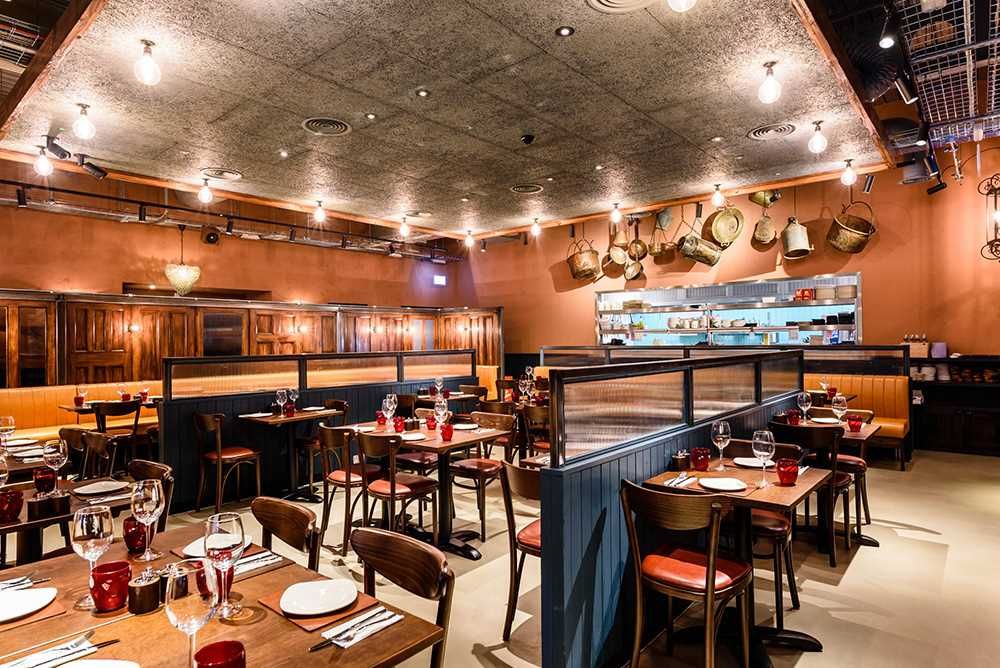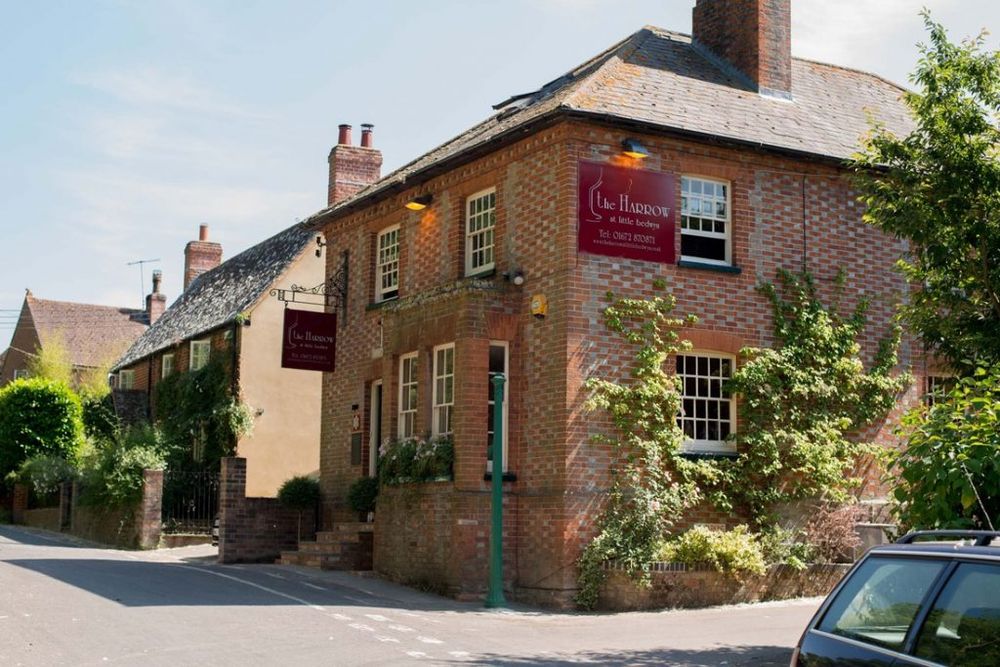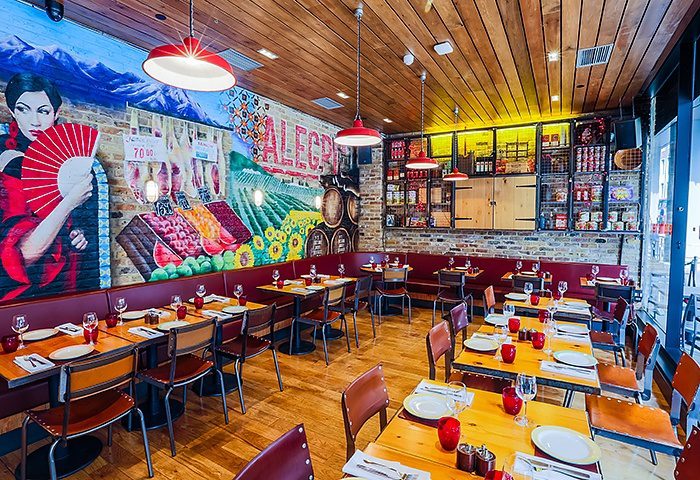If you are still looking for ideas to drive wine sales this Christmas then here’s some advice from some wine men and women on how Rioja can bring new life to a festive wine list and offer not only great value, but a quality, reliable alternative to expensive French classics.
Whilst there will be many who won’t look beyond Bordeaux and Burgundy for what wines to serve and drink with their Christmas lunch, there will be an increasing number who will be forced to cast their palate out wider than that.
The cost and availability of quality Bordeaux and Burgundy makes it far more of a treat, or even a luxury to have with your Christmas meal than in previous years. For restaurants and hotels looking to offer good quality, but still value for money festive packages then there is going to have to be a lot more creative thinking within the wine and sommelier team to stop the wine becoming the tipping point some customers can’t afford.
Which brings in to play other wine regions that equally have all the classic, reliable, Old World credentials that France has, but with wines that still offer excellent quality and value for money. The winning combination for any on-trade outlet and their customers.
Rioja has to be up there as a tried, trusted and loved alternative to old school Bordeaux or Burgundy. Particularly as it brings with it arguably more consistently approachable, easier to drink, fruitier wine best suited to a table of mixed wine tastes than a classic Claret.

Camino’s Richard Bigg believes Rioja can be a great match for turkey
Richard Bigg, managing director of the specialist Spanish restaurant group, Camino, is no doubt that Rioja can more than hold its own over the festive period and is a great match with turkey.
“Definitely so. There are so many styles, and the majority of reds are not too tannic, so best would be something that hasn’t spent too long in barrel. The whites are a good way to kick off if unoaked, but the oaked styles have the richness and depth that would be a perfect match for turkey, stuffing and all the trimmings,” he claims. “The rosés are also very versatile, so would also be a good bet.”

Roger and Sue Jones
Michelin star chef, Roger Jones, of The Harrow at Little Bedywn, says that although he does not serve turkey over the festive period he would certainly back Rioja, particularly its whites, as a good match – and not just over Christmas and the New Year. “It’s a good time to be promoting white Rioja in the winter as it brings a glow of sunshine and vibrancy. It is also one of the best value wines available.”
If you are going to list a Rioja at this time of year then you have to make it work hard, he adds. “I would definitely offer it by the glass, especially white Rioja which is an interesting ‘new’ experience for most.”
Make room for whites
White Riojas are certainly working at The Harrow. “But it probably sells better for us as we promote it by the glass,” adds Jones.
They are also doing “very will indeed” at Camino, agrees Bigg. ”We actually sell 10% more white than red, which will be down to the significant sales of white wine in the bars. But then 10% of the total is rosé.”
Noel Reid, head wine buyer at Robinsons Brewery, says he has been keen to have a white Rioja on its list for a while, but “with smaller lists there are seldom room for a number of white wines from Spain on one list”. And when they do it tends to only leave room for an Albarino, he adds.
But, he concedes, the time has come to bite the bullet. “We are looking to pull a blend together with David Forcada for release next year. He has some quality fruit and we are good to look to add a little extra spicy dimension with a small touch of oak. We have plenty of unoaked fresh style wines and it will help add a further point of difference from many others listed.”
He would certainly be open to the idea of a white Rioja for Christmas dinner. “Personally I think it’s a great match. Why not. I wish I had David’s wine ready now. You’re making my mouth water!”

Camino’s new restaurant in Shoreditch is the ideal setting to encourage customers to try different styles of Rioja, particularly its whites
Specialist approach
Not surprisingly Rioja is a very important region for specialist Spanish wine importer Moreno Wines. So much so that the area is its biggest seller out of a Spanish range that enjoyed a 60% increase in sales last year, says managing director, Abbi Moreno. “Rioja sells itself and doesn’t need any hand selling when it’s on a restaurant list.”
That said she is less bullish about white Riojas. “White is very low (in sales) compared to red and some consumers still think that Rioja is the grape variety and that it only produces reds. So whites are always a tough sell.”
In fact she would be more likely to push a white Tempranillo for a Christmas meal – “a wine with great texture and could almost be an alternative to Chablis, given the rising prices,” she adds.

Alvaro Ribalto, buyer at Indigo Wine, another specialist Spanish wine importer, says “white Rioja is without doubt a growing category” that is “benefiting from the success” of other Riojas. “The best wines come from old vineyards and have been aged oxidatively for a period of time. These wines are truly exceptional and are able to hold and develop in bottle for years to come,” he explains.
If you’re looking to offer a white Rioja with turkey then he says to go for “the richer, oak-influenced styles with sufficient depth and complexity to stand up to the food.”
Spain’s all rounder
One of the major reasons why Rioja has been one of the mainstays on so many wine lists, in all channels of the on-trade, as it performs so well around the year.
Biggs says Camino’s own Rioja sales are performing “extremely strongly”. He adds: “The name gets people in, but you have to follow up with the quality at every price point. Up to 28% of our overall still wine sales are Rioja.”
What Rioja has in its favour, adds Biggs, is that it such an all rounder. “Really any level is popular. Unsurprisingly house red, white and rosé fly, though at our Monument branch in the City the Beronia Reserva is the single best-selling wine we have and in second place is our house Rioja.”
Price is right
Best selling price points will vary around the country, and by type of outlet. At Camino it is the house styles that “are the most popular by far, which sell at £29”. Biggs adds: “The Reserva styles we have start at £37 with a fabulous Gravonia from Lopez de Heredia.”
Abbi Moreno is quite clear it’s the bread and butter Rioja that is vital in driving on-trade sales: “£5 to £6 is key for Roja with the on trade. Keeping wines on the list at £20 to £25 per bottle.”
Reid, in the main, agrees: “£20 is still a sweet point for us in terms of price. We find many of our customers are still unsure of opening wines much above this by the glass for fears of wastage. We are slowly seeing this change, however, as reality seems to be hitting home about price and that these will slowly move upwards towards the £22.50 and £25 mark.”
He adds: “We will always see a continuous small stream of sales at Reserva level for those who enjoy quality finer styled Rioja especially with finer cuts of meat. Price is less of an issue here and we tend to sell our Reserva between £25 and £28. Still very good value.”
But it’s wines by the glass that is the big seller for Rioja which “dwarf” its other price points, stresses Reid. “This is lead by price and driven by our Roble wine Bodegas Forcada Vendimia Seleccionada which has four months in oak. We price this as a higher level by the glass option, which for us sits between £5 and £6. And just below the £20 mark,” explains Red.
“We do list a Joven which has lovely fruits, but for me the essence of Rioja is found with at least a small amount of oak contact and we tend to look at the Roble to deliver this.”
Ribalto says Joven is working well or it by the glass “as a fresh and drinkable style”. “But there is probably a limit at around £25-28 per bottle and £6.5-£8 per glass. Crianza and Reserva wines start at around £35-£40, all the way to around £80. ”
Jones says Rioja can also perform well at the more premium end of the market and whilst his Rioja sales are “not huge” he has success with specific brands such as Vina Tondonia – which is particularly popular with American tourists – “such as the 1947” and the older, more traditional Riojas. “Our cheapest is £48 – Marquis Murrieta Reserve 2012 – which is by the glass, so sells well.”

It is possible to trade customers up to a high spend on Rioja providing you have the right names on the list
The right style
Crianza-style Rioja is the style to watch going into 2018, says Abbi Moreno. “Crianza is growing much more than the other styles,” she claims. “Many wineries are not producing Joven due to low yields and rising prices. Crianza will be key next year.”
Ribalto is not so sure and says Indigo has been less successful with Crianza which he puts down to price being more of an important factor in a restaurant or bar’s decision. “Something which we can’t always compete on,” he concedes. That said “we tend to sell relatively well through all Rioja lines from Joven all the way to Gran Reserva,” he adds.
“Reserva is the category we have more success with. The wines tend to have the perfect balance between depth, complexity, and readiness to drink as a result of the bottle ageing and competitive pricing,” he adds.

Biggs stresses different outlets will have different experiences with Rioja, but it’s important to find the style which is right for your customers. “See what works for you, but certainly experiment,” he says. “We do various formats with the Beronia Reserva we have; bottle, magnum, jeroboam and even Nebuchadnezzar for Christmas. For our larger formats we make a worse margin than the 750ml bottles, as our customers think if they are buying double the size they should get a better deal, despite the fact the our costs are the reverse. But this approach helps make the experience more memorable.”
Moreno agrees that magnums are just made for Rioja. People trust them and they’re just great to go with a meal, she says.
“Serving glasses from a Magnum does bring an extra element of theatrical performance to the restaurant floor and can encourage sales with neighbouring tables,” adds Ribalto. “It is also the perfect format for tables of eight people or more, quite a standard size in the weeks leading up to Christmas in restaurants.”
Driving other Spanish wines
One of Rioja’s other big selling points is how it can act as a catalyst and a driver for a restaurant’s other Spanish wine sales. Biggs explains why: “It’s a good way to open the door to Spanish wines for those unfamiliar with them (is anyone unaware?!) Then you could try the wide range of permitted Rioja grapes from other regions to explore more of what Spain has to offer.”
Moreno agrees: “Having Rioja and then introducing other wines from Spain always helps. I’m still shocked at how little consumers know about Spanish wines and Rioja is seen as a wine brand rather than a region, so it really helps to introduce them to other wines.”
As does Reid: “It’s always good to have something customers can already identify with, and Rioja most certainly is that. If carefully used it can help open further opportunities for other regions.”
Jones opts for a rather different approach and says that “rather than sell the wine as Spanish or Rioja sell it as a grape variety”. “Whether it is Txakoli, Viura, Albariño, Malvasia, Granacha Blanc, it is much more interesting,” he claims.
For Reid it’s not only Rioja’s brand power that is so important for consumers, it’s the fact “customers identify it as a quality product,” adds Reid. “We find a lightly oaked Roble style wine works best for us especially by the glass. It leaves the wine with bags of juicy dark fruits to the fore whilst ensuring there is that familiar oaky presence,” he adds.
The final word goes to Alvaro Ribalto at Indigo: “Operators should be aware of the new ‘Village’ and ‘Viñedos Singulares’ categories and state these in their lists. Other regions such as Bierzo or Cava are following the transformation of quality hierarchies in Spain and therefore there is an excuse to have the conversation with the customer to recommend these and other regions.”
Just perhaps not when they are tucking in to their turkey.
* What do you think? How are Rioja sales performing and which styles are best suited for this time of the year? If you would to share a view please leave a comment at the bottom of this article.










































